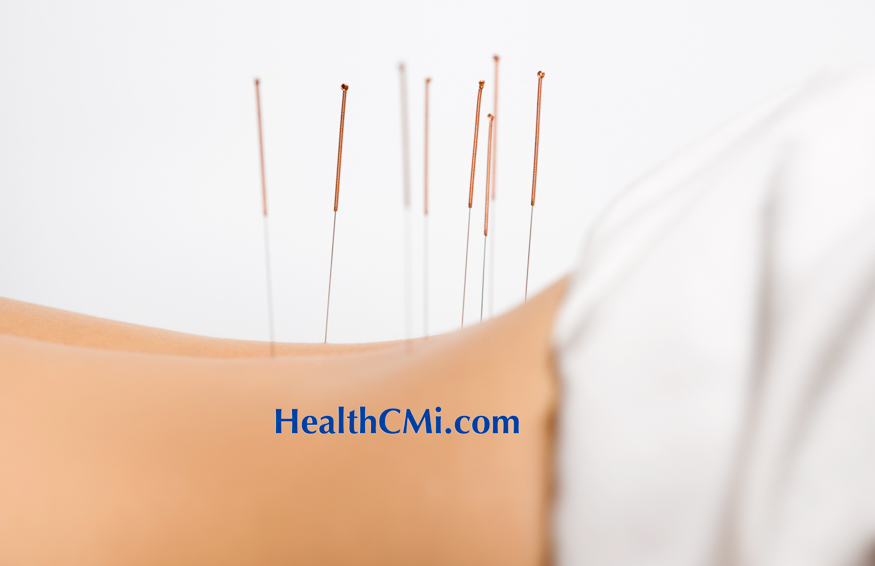
Acupuncture is an effective treatment modality for lumbar disc herniations. Researchers from Haikou Hospital of Traditional Chinese Medicine conducted a clinical trial. They examined 96 cases in a two-arm investigation. Pharmaceutical intervention with physical rehabilitation therapy was compared with routine care supplemented with warm needle acupuncture. The results of the experiment indicate that the addition of warm needle acupuncture significantly enhances patient outcomes for patients receiving drug and physical therapy. [1]
The results of the study show that the levels of IL-1β, TNF-α, and β-EP demonstrated significant improvement in both groups. The warm needle acupuncture group had greater outcomes for downregulating pro-inflammatory cytokines (IL-1β, TNF-α) and upregulating endorphin levels (β-EP). VAS (Visual Analog Scale ) and JOA (Japanese Orthopedic Association) scores improved post-treatment in both groups, with the acupuncture group significantly outperforming the other group. Learn more about the treatment of low back pain in the acupuncture continuing education courses entitled Low Back Pain >
The common peroneal nerve (a branch of the sciatic nerve) motor conduction velocity (CPNMCV) and tibial nerve conduction velocity (NTMCV) levels significantly improved in both groups post-treatment. The acupuncture treatment group showed greater statistically significant improvements in CPNMCV and NTMCV levels. The acupuncture group exhibited a total effective rate of 93.75% (45/48) while the other group exhibited a rate of 75.00% (36/48).
From March 2019 to December 2019, 96 lumbar disc herniation cases were recruited to partake in the study. The patients were randomized into a routine care control group and a warm needle acupuncture integrated treatment group, with 48 patients in each. Patients suffered from chronic lower back pain that escalated into acute episodes accompanied by intermittent radiating pain in the lower limbs. Patients exhibited limited forward bending of the spine, neurological examinations showed weakened muscle strength and abnormal sensations in the nerve distribution areas, and CT scans indicated a curved soft tissue density protrusion visible behind the vertebral body. Drawing on TCM (traditional Chinese medicine) principles, patients were classified under the cold-damp-bi stagnation category because their mobility was affected and symptoms were exacerbated particularly on cold, rainy days.
The routine drug and physical therapy group adopted regular care but did not receive any acupuncture. The acupuncture group had the same routine care plus warm needle acupuncture.
Each patient assumed a prone position and underwent a massage technique employing the palm-pushing method, where the muscles of the waist and buttocks were pressed seven times using overlapping palms, aiming to relax the muscles. Gradual pressure ranging from light to heavy was applied from top to bottom, with a recommended treatment duration of 10 minutes.
The sides of the spine were massaged using thumbs, applying pressure seven times from top to bottom. Once daily, bilateral bladder meridian kidney back-shu points (Shenshu) and ashi points on each patient's back were pressed for 10 minutes while BL36 (Chengfu) was pressed with the elbow tip for an additional 10 minutes. Post-massage, each patient was instructed to lie supine and perform straight leg raises for 30 minutes once per day. Medication treatment involved administering a premixed medication (consisting of dexamethasone, lidocaine, and methylcobalamin) via epidural blockade once weekly for four weeks.
Dexamethasone is a glucocorticoid (corticosteroid hormone). Lidocaine is an anesthetic and methylcobalamin is vitamin B12.
The warm needle acupuncture group received additional care beyond the aforementioned routine procedures. Perpendicular insertion and a mild reinforcing-attenuating method was applied. Filiform needles of 0.30 mm × 75 mm were utilized for Zhibian and Huantiao, while those of 0.30 mm × 40 mm were used for other acupoints. The primary acupoints chosen were the following:
- BL40 (Weizhong)
- GB30 (Huantiao)
- GV3 (Yaoyangguan)
- BL54 (Zhibian)
- EX-B2 (Jiaji) (bilateral)
- BL23 (Shenshu) (bilateral)
For moderate to severe lumbar pain, SP10 (Xuehai) and GB34 (Yanglingquan) were added. For significant swelling, SP9 (Yinlingquan) was added. Upon achieving a deqi sensation, a prepared moxa piece was secured to the end of the needles at Jiaji acupoints. Needles were retained for 30 minutes. The treatment was administered daily for five consecutive days per week for a total of four weeks.
The addition of acupuncture to drug and physical therapy increased the total effective rate by 18.75%. Strengths of this investigation are the inclusion of both subjective and objective data. The marked effects of acupuncture on IL-1β, TNF-α, and β-EP provide insight into biological responses induced by acupuncture. Based on the results, acupuncture is a recommended treatment option for patients with lumbar disc herniations.
Reference:
1. Clinical Observation on the Warming-Needle Moxibustion in the Treatment
of Lumbar Disc Herniation with Cold-Damp Obstructing Blockage Syndrome, ZHANG Yan-Zhen, LIANG Chao, CHEN Shao-Ping, Journal of Guangzhou University of Traditional Chinese Medicine, 12-2023, v 40, 12.


